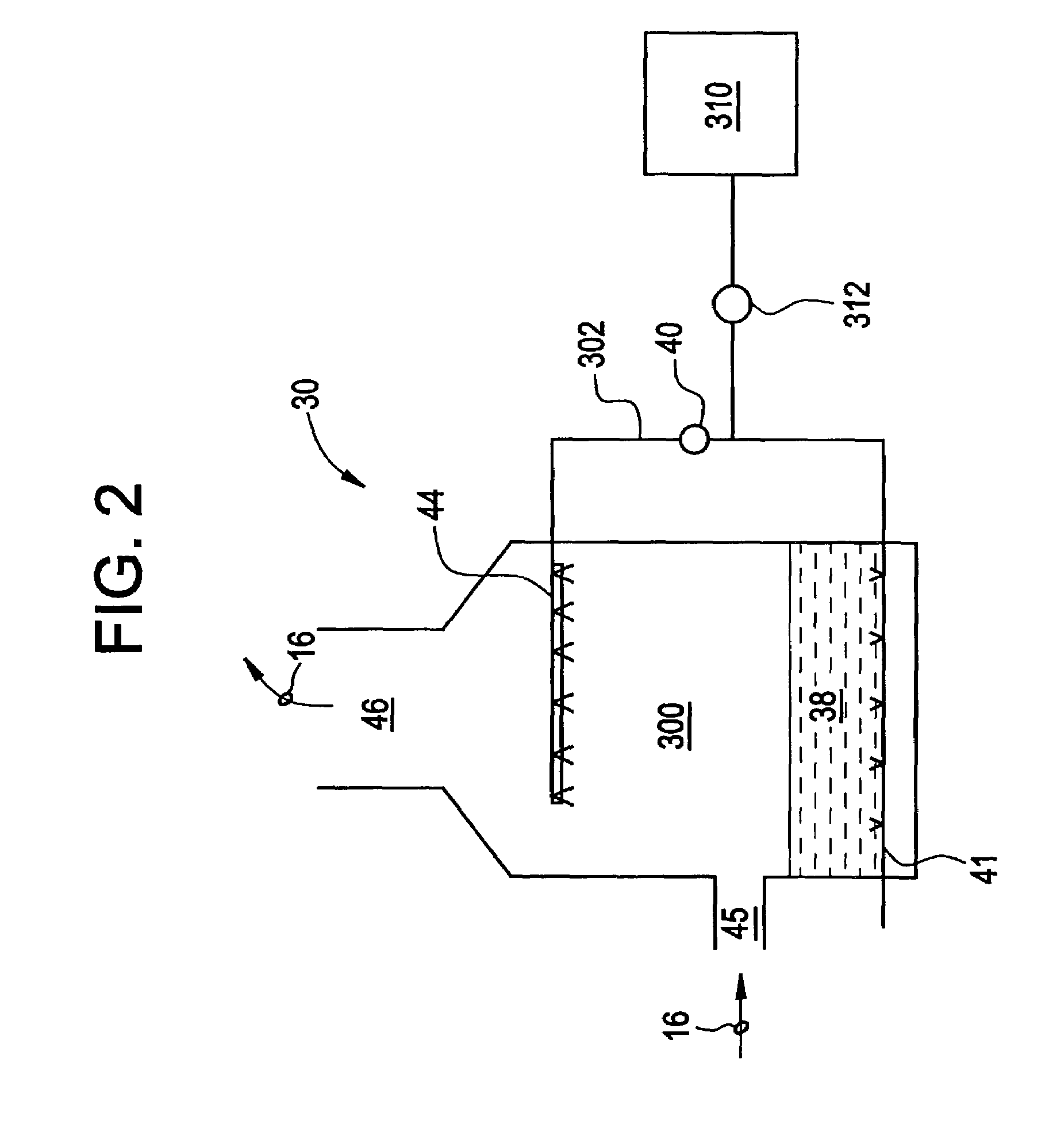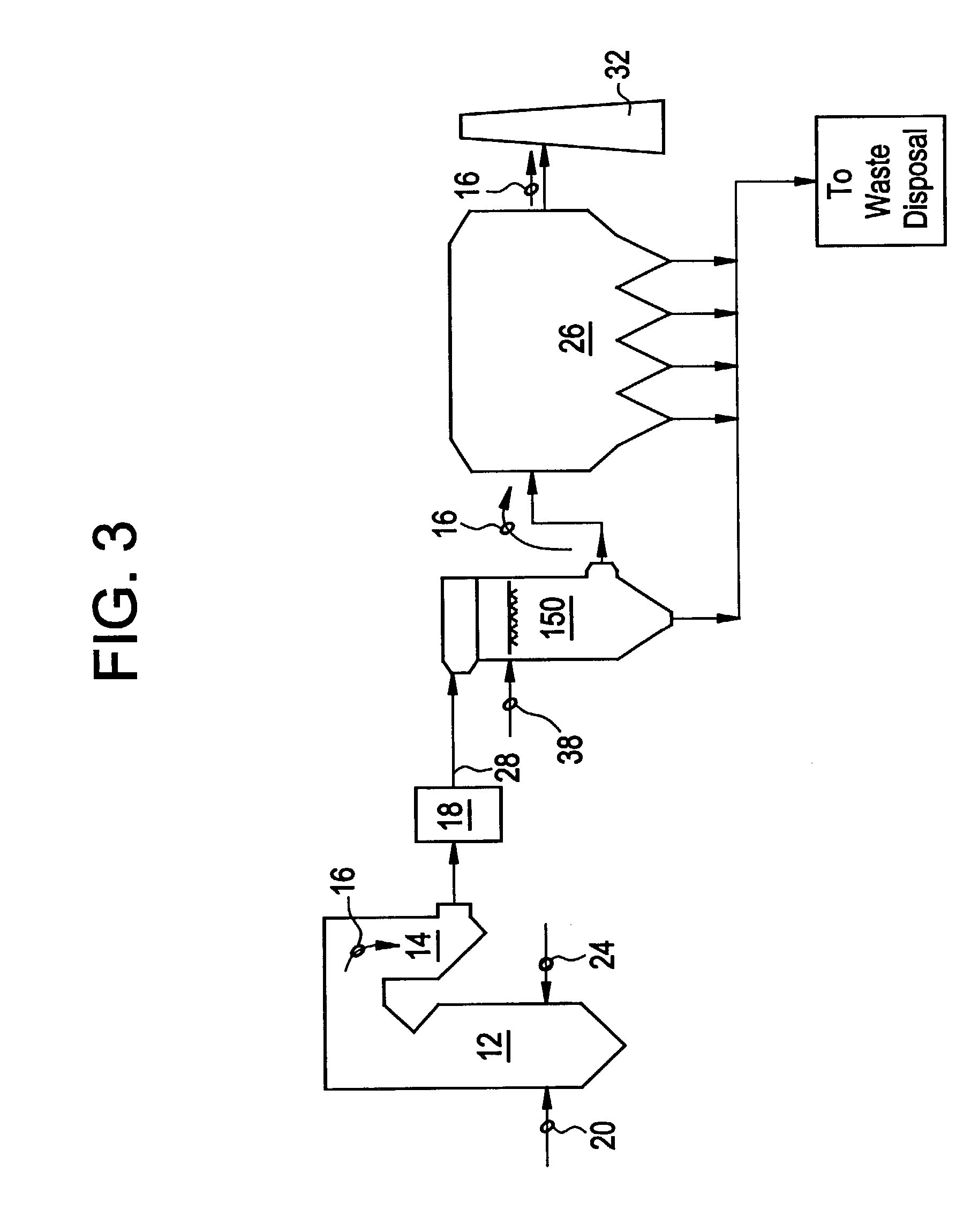Use of sulfide-containing liquors for removing mercury from flue gases
a technology of flue gas removal and sulfide-containing liquors, which is applied in the direction of emission prevention, separation processes, lighting and heating apparatus, etc., can solve the problems of difficult capture of elemental mercury, inability to collect and dispose of along with fly ash, etc., and achieve the effect of inherent safety advantag
- Summary
- Abstract
- Description
- Claims
- Application Information
AI Technical Summary
Benefits of technology
Problems solved by technology
Method used
Image
Examples
Embodiment Construction
[0028]Referring to the drawings generally, wherein like reference numerals designate the same or functionally similar elements throughout the several drawings, and to FIG. 1 in particular, FIG. 1 illustrates a coal-fired utility boiler installation of the type used by utilities in the generation of electric power, generally designated 10, and which represents one type of industrial process to which the present invention is applicable. In its broadest form, the present invention comprises a method for removing mercury from the flue gas generated during the combustion of fossil fuels or solid wastes through the use of aqueous sulfide ions. Of course, while the aforementioned coal-fired utility boiler installations are but one example, and the method of the present invention will likely first find commercial application to the removal of mercury from the flue gases produced by such utility boiler installations which combust such fossil fuels, any industrial process using a wet scrubber...
PUM
 Login to View More
Login to View More Abstract
Description
Claims
Application Information
 Login to View More
Login to View More - R&D Engineer
- R&D Manager
- IP Professional
- Industry Leading Data Capabilities
- Powerful AI technology
- Patent DNA Extraction
Browse by: Latest US Patents, China's latest patents, Technical Efficacy Thesaurus, Application Domain, Technology Topic, Popular Technical Reports.
© 2024 PatSnap. All rights reserved.Legal|Privacy policy|Modern Slavery Act Transparency Statement|Sitemap|About US| Contact US: help@patsnap.com










